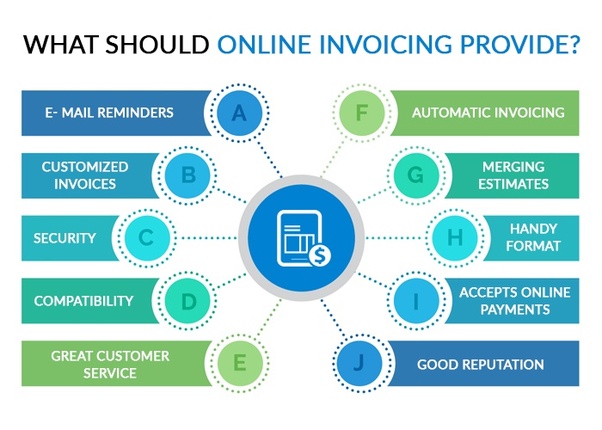- Are you still preparing and sending your invoices to your customers manually using traditional software like Excel, etc?
- Can your invoices be prepared only if someone is there in office?
- Do you miss following up for your pending payments because of lack of data?
- Does generating invoice related reports take a lot of time?
- Is your cash flow affected because of these delays?
- Are you not able to use the latest modern payment methods like Credit/Debit Cards, UPI, etc.

If so, not only does it mean your system is obsolete, but you’re putting yourself and your business in a disadvantaged position and hampering your cash flows.
You will agree that with the recent technological changes, manual invoice management is an outdated methodology and has been found to have many drawbacks and weaknesses, and all of them contribute to a very poor invoicing experience both for your company and your customers.
Chances are that if you’re still processing your invoices manually using excel or any other way, you are encountering the below classic problems and harming growth & productivity.
Below are some of the drawbacks associated with manual invoice processing, and an explanation of how such techniques have been undermining your cash flows, and why you need to ditch them NOW.
- Affects Cash Flows
Manual invoicing is time-consuming and boring, and that can lead to mistakes and delays in sending invoices to your customers at the right time which can affect getting paid quickly, thus affecting your cash flows. It is also difficult to track missed or delayed payments as you don’t get to see the pending invoices at a glance. - It’s costly
On average, it costs about more to manually process just one invoice. If your organization manually processes hundreds and thousands of invoices annually, you can just do the calculations! Manual operation is not a good idea anymore. - Cannot use latest payment modes
With manual invoicing you cannot use the latest mode of payments, ex. Online credit/debit card, UPI, QR Codes, Paypal, etc, which can significantly reduce payment receivable life cycles for your company and makes life easy for your customers too. - It’s time-consuming
With a manual system, it takes much longer to prepare and send an invoice. Your team spends more time to get less significant work done. This further contributes to higher cost of operation, as you’d have to pay more people for longer working hours. But, wouldn’t it be better to get more done in lesser time, and with as little human intervention as necessary? - It causes you to lose money
Issues of missed invoices, delayed payments, wrong values and missed entries are all very common with manual invoice management. Whenever this happens, you lose money and your company’s bottom line is impacted. - It’s boring
And often very annoying. This leads to ineffectiveness for your team. Nobody wants to sit at the same old desk and enter mind-numbing data for hours, every business day, but unfortunately, that’s what manual invoicing is all about. - It’s prone to human error
Since processes are manned by error-prone humans in a manual system, mistakes are inevitable. They can even lead to bigger issues, which only means wasted time and money for your organization. - It’s a lot of hassle
Manual invoice processing is often complex and inconvenient. To prepare invoice one needs to extract information, match details, send it back and forth for different workflows like approvals, prepare checks, and do a lot of other complicated stuff. Who wants to do any of that? - It’s outdated
Clinging to a manual system nowadays makes it feel like you’re still operating in the 1940s. Smart, efficient modern businesses upgrade and comply with the best technology can offer today. Following an antique system puts you in the backseat and creates opportunities for your competitors to outclass you. - It requires more hands
A manual invoice processing procedure needs more human workers to function, given that the related processes are hand-operated. And you would have to pay all of those humans. - Invoice information is not readily available and accessible
In a manual system, invoice information is stored locally in a physical office. This means you can’t access it outside of the office. There’s absolutely no way a team can work remotely in this way, which impedes productivity. - It delays progress
In a manual invoice processing system, since your workers are always sitting on the same desk entering data or performing some other related tasks, their time is not freed up to work on more value-adding or growth-oriented action items. This slows down advancement and development, making it difficult to implement new strategies and make progress on other fronts. - You can’t easily track your cash flow
Without clear and quick information of pending invoice, you cannot ascertain a proper cash flow for your organization. A manual system doesn’t let you track this very easily. - Financial reports become taxing to prepare
With a manual system, preparing reports for tax, audits, or other purposes becomes a task nobody wants to complete. You would have to manually collate information, go through heaps of documents to find numbers, compile notes, and more. - It’s vulnerable to security risk
A manual system is easily exposed to security problems like data theft, data loss, and the like. When stored locally, anybody can illegally access and use your data as they want. Data security is important because it represents the financial operation of your organization. - Your workspace becomes disorganized
Due to manual invoice processing being a paper-intensive activity, your work environment will become cluttered with paperwork. Studies repeatedly find that a cluttered work environment makes you less productive.
13 Benefits of shifting to an
Automated and Online Invoicing system

- Get paid faster and improved cash flow
- Better accounts reconciliation
- Faster payment using various payment methods
- Reduced costs of operation
- Facilitate automation
- Shorten payment cycles
- Enhanced tracking and compliance
- Prevent errors, losses and frauds
- Better reporting and planning
- Improved customer Experience
- Reduce the carbon footprint
- Accessible 24 x 7 from anywhere in the world
- Higher security and control
If you are interested in shifting to a Secure and Fast Online Invoicing solution, we can help. Reach out to us or Read more